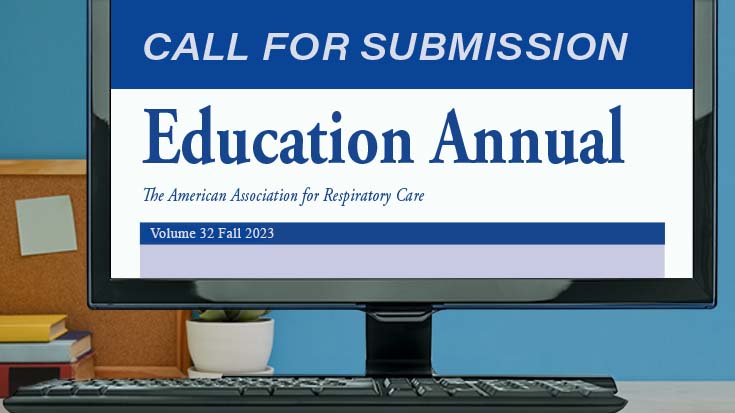
The AARC has been developing clinical practice guidelines (CPGs) since 1992 and, like other professional organizations, often releases additional practice-based documents aimed at guiding care.
Right now, the Association is hard at work on two new projects. The first will produce a Good Practice Statement dealing with patient-ventilator assessment, the second a CPG on spontaneous breathing trials.
The teams get to work
“In January 2022, a small group of respiratory therapists was asked to be part of a ‘Patient-Ventilator Assessment’ or ‘PVA’ team,” explained RESPIRATORY CARE Director of CPG Development Lynda T. Goodfellow, EdD, RRT, AE-C, FAARC. “The purpose was to review the known medical science literature and make recommendations that would guide the respiratory care profession.”
With the assistance of a librarian, the team conducted a preliminary literature review, and Dr. Goodfellow, who is chairing the team, joined RESPIRATORY CARE Managing Editor Dean Hess, PhD, RRT, FAARC, in providing guidance on overall objectives for the project.
A more targeted literature search and systematic review is now underway to address the following nine questions –
- Does ensuring the appropriateness of alarms vs. not affect patient safety?
- Does managing the artificial airway/interface vs. not prevent complications?
- Does assessing adequate humidification vs. not improve outcomes?
- Does a targeted PVA vs. not result in better resource allocation?
- Does remote (telehealth) PVA vs. being at the bedside result in similar outcomes?
- Does ensuring lung-protective ventilation vs. not result in more ventilator-free days?
- Does evaluation and treatment of dyssychrony vs. not result in more ventilator-free days?
- Does managing dyspnea/distress vs. not result in improved patient comfort?
- Does the evaluation and advocation of liberation potential vs. not lead to less time on MV?
The second team, which is being chaired by Karsten Roberts, MSc, RRT, RRT-ACCS, RRT-NPS, was formed in February to begin work on the spontaneous breathing trials guideline.
“This team is tasked with developing a CPG mainly because there is more medical literature available, but also because it has not been evaluated collectively to determine the evidence and to make recommendations related to clinical practice,” explained Dr. Goodfellow, who is acting as the team’s methodologist.
The group is in the process of formulating Population-Interventions-Comparators-Outcomes (PICO) questions to guide the process.
“Once the PICO questions are finalized, the literature review and evaluation process will commence, with team members grading the strength of the evidence so that unbiased recommendations can be incorporated into a CPG,” she continued.
Evidence you can rely on
The group will also form one or two additional teams this year to further examine other areas of concern in respiratory care practice. Their long-term goal is to sustain the development of CPGs, with at least four teams per year working on the most pressing questions in clinical practice being faced by the profession.
For RESPIRATORY CARE Managing Editor Dean Hess, PhD, RRT, FAARC, this endeavor brings great impact and improvement to the profession and patient care.
“This work brings AARC CPGs to the highest level yet,” Dr. Hess said. “These projects will benefit respiratory therapists and, most important, their patients. Today’s CPGs will update and reinvigorate the development of patient-focused respiratory care protocols and their use. I am excited for the impact that this will have on improving patient outcomes.”
Dr. Goodfellow continues to discuss the importance of evidence to support RT practice.
“There is a need for respiratory therapists to have evidence that they can rely on in their practice and that serves to produce outcomes that patients benefit from the most,” said Dr. Goodfellow. A key factor in all of it, she continues, is to take outcomes that are important to patients into account. “By considering outcomes related to patient benefit, CPGs may be more impactful in terms of mortality and quality of life,” she said.
How do CPGs and other practice initiatives impact the working lives of respiratory therapists? Dr. Goodfellow notes that these documents are not only centered on the known evidence and help explain why certain practices are better than others, they can also help RTs advocate for their patients and ensure their clinical practice remains intact.
“Evidence-based recommendations are an additional resource to employ when decisions on resource allocation and resource misallocation affect respiratory care services,” she said.
Check out the complete list of AARC CPGs.
Email newsroom@aarc.org with questions or comments, we’d love to hear from you.
















